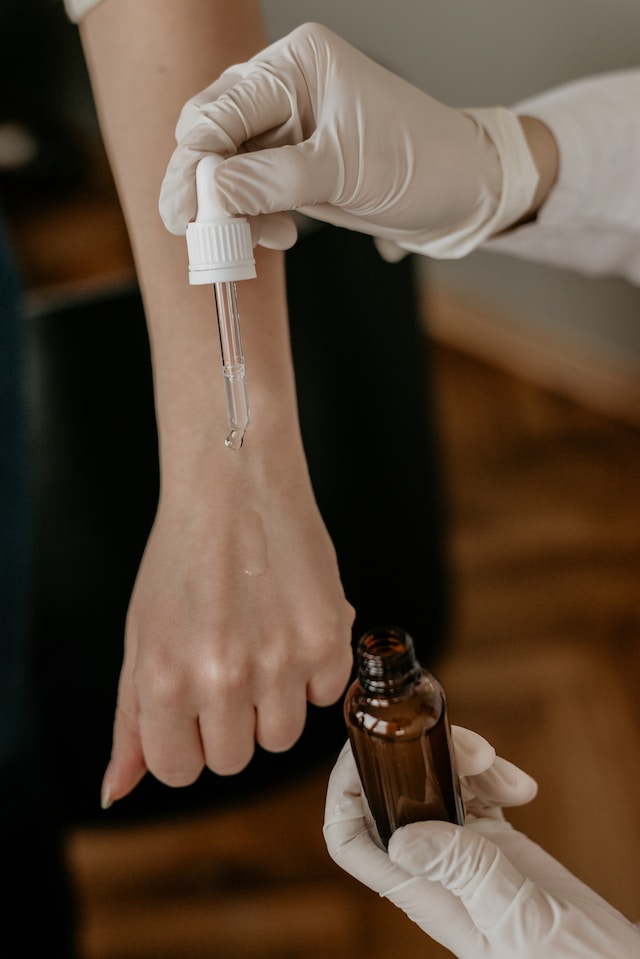Call Today to Schedule an Appointment: 212-319-5282
Best Allergy Testing: What to Expect and How it Can Help
How do you get the best allergy testing? Allergies can be a frustrating and sometimes even life-threatening condition for many people. The good news is that with proper diagnosis and treatment, it is possible to manage and reduce symptoms. Allergy testing is a crucial part of this process, as it helps to identify specific allergens that may be causing an individual’s allergic reactions. In this blog post, we will explore the importance of this type of testing and what patients can expect during the process.

What is Allergy Testing?
Testing for allergies is a medical procedure that helps to identify the specific allergens that trigger an individual’s allergic reactions. There are several different types of tests, including skin tests, blood tests, and patch tests. Testing for allergies can be performed for a wide range of allergens, including pollen, dust mites, pet dander, and certain foods.
Why is Allergy Testing Important?
Allergy testing is important because it helps to identify the specific allergens that are causing an individual’s allergic reactions. Once these allergens are identified, patients can take steps to avoid exposure to them and reduce their risk of allergic reactions. This type of testing can also help to inform treatment plans, including the use of medications and immunotherapy.
What to Expect During Allergy Testing
The specific procedure for allergy testing may vary depending on the type of test being performed. However, there are some general things that patients can expect during the process.
Types of Allergy Tests
 Skin tests
Skin tests
Skin tests are one of the most common types of allergy testing. During a skin test, a small amount of an allergen is applied to the skin, usually on the back or forearm. The skin is then pricked or scratched to allow the allergen to enter the skin. If the patient is allergic to the specific allergen, they will develop a raised bump or redness at the site of the test.
Blood tests
Blood tests are another common type of allergy testing. During a blood test, a small sample of blood is drawn and sent to a laboratory for analysis. The laboratory will test the blood for specific antibodies that are associated with allergic reactions.
Patch tests
Patch tests are typically used to identify allergies to substances that come into contact with the skin, such as certain metals, fragrances, and preservatives. During a patch test, small patches containing potential allergens are applied to the skin, usually on the back. The patches are left in place for 48 hours before being removed. If the patient is allergic to one of the substances, they will develop a reaction at the site of the patch.
Preparing for the test
Patients may need to stop taking certain medications, such as antihistamines, in the days leading up to allergy testing. This is because these medications can interfere with the results of the tests. Patients should also avoid wearing tight clothing or jewelry that may irritate the skin on the day of the test.
Allergy Testing: Conclusion
In conclusion, allergy testing is an important part of managing and treating allergies. By identifying specific allergens, patients can take steps to avoid exposure and reduce their risk of allergic reactions. If you are experiencing symptoms of allergies, it is important to speak with an allergist and consider undergoing testing.
If you are in the New York City area and looking for a qualified allergist, Boyan Hadjiev MD, also known as “Dr. Sneeze,” can help. Dr. Hadjiev offers a range of allergy testing and treatment options.
Allergy, Asthma and Sinusitis P.C
30 East 40th Street (Btwn Madison and Park)
Suite 1200
New York, NY 10016
212-319-5282
Serving all of New York City and the Tri State Area including Zip Codes: Top Allergist NYC Midtown, Chelsea and Clinton: 10001, 10011, 10018, 10019, 10020, 10036 | Gramercy Park and Murray Hill: 10010, 10016, 10017, 10022 | Greenwich Village and Soho: 10012, 10013, 10014 | Lower Manhattan: 10004, 10005, 10006, 10007, 10038, 10280 | Lower East Side: 10002, 10003, 10009 | Upper East Side: 10021, 10028, 10044, 10128 | Upper West Side: 10023, 10024, 10025
